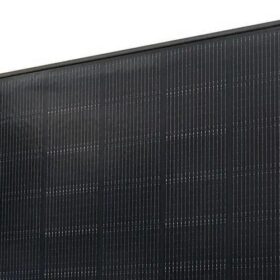Zimbabwe tenders 5 MW solar project
The Infrastructure Development Bank of Zimbabwe (IDBZ) is seeking an engineering, procurement and construction (EPC) contractor to develop, finance, and operate a 5 MW solar project in Gutu district, with expressions of interest due by April 14.
Withthegrid expands real-time renewable energy asset controlling platform
Dutch technology company Withthegrid has expanded the functionality of its flagship Teleport Gateway, supporting real-time control and management for a wider range of renewable energy assets and markets. To enable product and international expansion, it has raised €3.5 million.
Dutch startup developing large plant to generate heat, power from hydrogen
HyER Power, a Dutch hydrogen energy producer, is developing the first large-scale hydrogen power plant in the Netherlands capable of generating both electricity and heat. The plant is set to begin operations by the end of the year.
Viridian Solar launches 23.6%-efficient TOPCon BIPV panel
The UK company says the new modules have a rated power output of 445 W and can reportedly guarantee a power yield of 95% after 10 years.
India’s NTPC allocates 1.2 GW wind-solar hybrid capacity at $0.039/kWh
NTPC has awarded 1.2 GW of wind-solar hybrid capacity at an average tariff of $0.039/kWh, with NLC India securing the largest share at 450 MW, followed by Enfinity Global, Welspun Renewable Energy, and Adani Renewable Energy.
Australia’s solar growth hits 4.7 GW in 2024 as rooftop market shifts
Australia’s solar rollout continues to reach new heights with a combined total of 4.7 GW of small- and large-scale PV installed across the country in 2024, but shifts in the rooftop market suggest that diversification of services will be key for the nation’s installer community going forward.
Midea Hiconics presents new three-phase residential storage systems
The company said its new Hienergy Series G2 product has a PV input ranging from 10 kW to 30 kW and storage capacity spanning from 5 kWh to 20 kWh. Maximum efficiency is rated at 97.5%.
Data center capacity soaring, along with investment and land use
According to a new Wood Mackenzie report, data centers developed since 2023 exceeded 92 GW of capacity at the end of 2024.
Are stakeholders ready for the segmental shift transpiring in the European PV and battery storage markets?
Many top European markets known for their dominant residential segments are prioritizing larger-scale projects, particularly in the commercial & industrial (C&I) and utility-scale segments. As this segmental shift gains momentum, the scale of investment and the complexity of maintaining projects in the new segment demand specific risk mitigation strategies. Consequently, investors, developers, EPCs, and—most importantly—C&I and utility-scale customers must reassess the criteria they use to select the most valuable and sustainable brands.
How much time do homeowners spend acquiring a rooftop PV system
Scientists have conducted a survey and analyzed transaction costs of residential PV projects. They focused on the time spent searching for and assessing information, as well as the time spent on aspects related to financing, permits, and contracts. Scoping information was the most time-consuming task.










